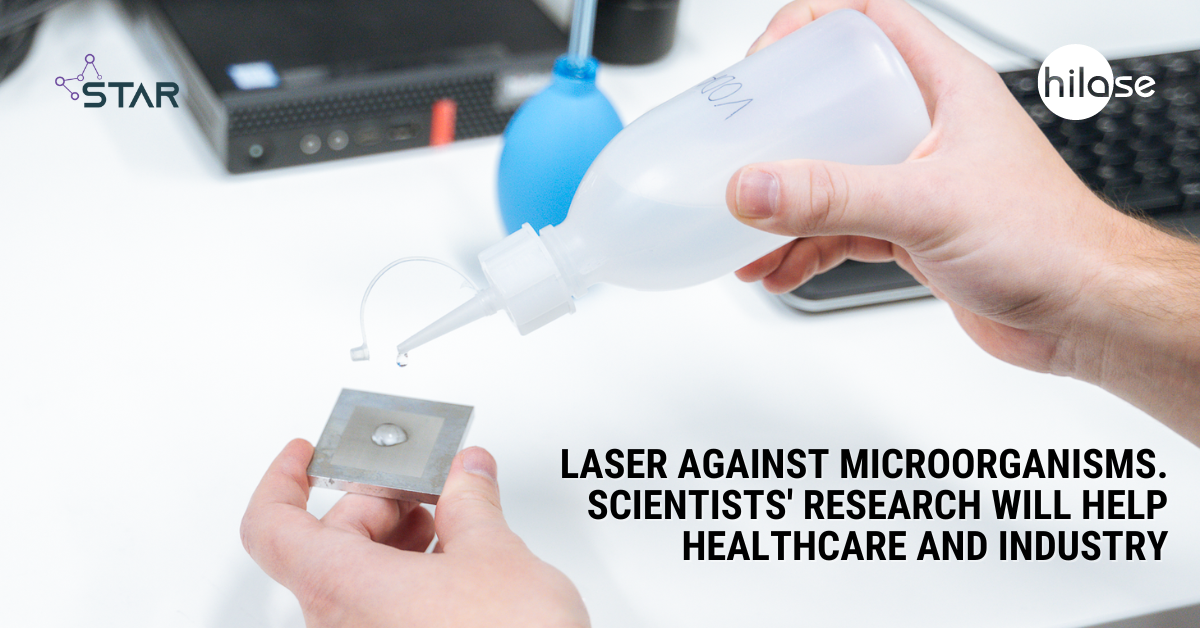On the STAR Region and Czech Academy of Sciences websites, you can find a press release on the topic of the use of laser technology in creating surfaces which repel microorganisms and prevent the formation of biofilms. These are applicable in both medicine and industry.

The HiLASE Centre’s Laser Micromachining (LMM) team is collaborating with BIOCEV on this application within the LasApp project. By treating the surface at the micro- and nano-level, they can work together to prevent chronic infections in catheters and implants, as well as avoid corrosion and contamination of industrial equipment. Adaptation of the process for objects of more complex geometry, which is common in healthcare and industry, is key. This is becoming a reality thanks to the LasApp project.
In the press release, Petr Hauschwitz, team leader of the Laser Micromachining team, describes the first results of the LasApp collaboration:
The interdisciplinary collaboration between microbiologists from BIOCEV and laser specialists from HiLASE is already yielding the first tangible results. “Our joint efforts have led to the development of the first types of surface treatments that reduce the risk of microbial contamination,” says Peter Hauschwitz. “This successful phase reassures us that we are moving in the right direction. We will now focus on the further development of topographies to extend the effectiveness against more types of microbes,” he stresses.
Last but not least, the press release also highlights the role of the STAR innovation cluster in the creation of the Central Bohemian equivalent of Silicon Valley:
The two science centres, BIOCEV and HiLASE, are part of the Science and Technology Advanced Region (STAR) cluster, which was established in 2015 near Prague between the municipalities of Vestec, Zlatníky-Hodkovice and Dolní Břežany. More than 1,000 scientists and students work in the area of 23 km2 in the field of biotechnology, biomedicine, lasers and laser applications.








